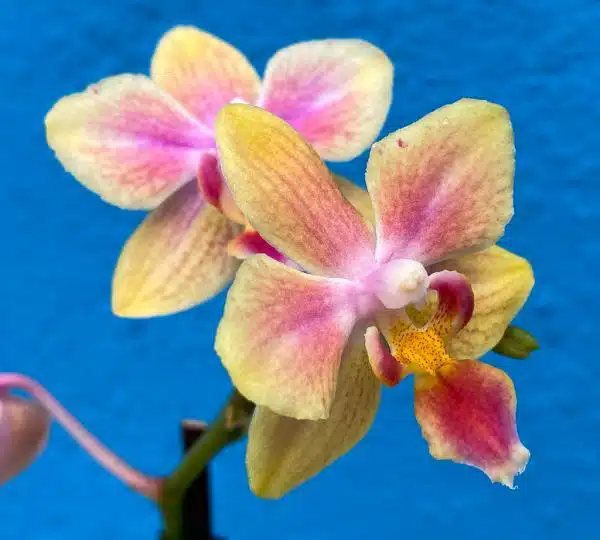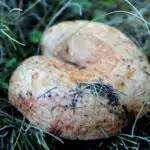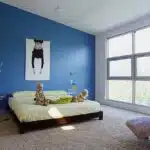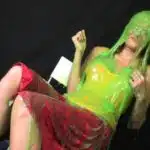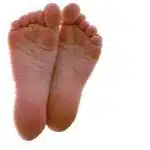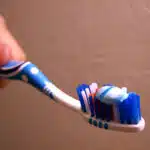As the spring season arrives, so does the abundance of yellow pollen that covers surfaces outside. Unfortunately, this also means that yellow pollen stains on clothing and carpet become a common sight. These stains are not only unsightly but can also be challenging to remove without the proper knowledge and techniques.
As a cleaning and stain removal expert, I have encountered numerous cases of stubborn yellow pollen stains on various fabrics. Over time, I have developed effective methods to remove these stains without causing damage to the material. In this article, I will share my expertise on how to remove yellow pollen stains from clothes and carpet, providing step-by-step instructions that will help you restore your fabrics to their original state. Whether you are dealing with fresh or set-in stains, these tips will equip you with the necessary skills to tackle even the toughest yellow pollen stains.
Understanding The Science Behind Pollen Stains
Pollen stains are a common problem for people who suffer from pollen allergies, as well as those who live in areas with high levels of pollen. Pollen is produced by plants and is an essential part of the ecosystem. However, it can also have a significant environmental impact when it accumulates on surfaces such as clothes and carpets.
The yellow color of pollen comes from the pigments that are present in the pollen grains. These pigments can be difficult to remove from fabrics and carpets, especially if they are not treated immediately. The longer the stain is left untreated, the more difficult it will be to remove.
Pollen stains can also vary in their intensity depending on the type of fabric they land on. Some fabrics may absorb more pollen than others, making the stain more prominent. Therefore, it is important to identify the type of fabric before attempting to remove the stain. By understanding these factors, we can develop effective strategies for removing pollen stains from clothes and carpets without damaging them further.
Identifying The Type Of Fabric
Fabrics, materials, synthetics, and blends are all common materials and fabrics used in clothing and furniture. Denim, cotton, wool, polyester, acrylic, rayon, linen, silk, nylon, and acetate are all examples of natural and synthetic fibers. Synthetic fabrics such as polyester, acrylic, rayon, and nylon are more resistant to staining than natural fabrics like cotton, wool, and linen. Leather is not usually used for clothing and may require specialized cleaning and stain removal techniques.
Fabrics
When it comes to identifying the type of fabric, it is important to consider its specific characteristics. Different fabrics require different care methods, and understanding these nuances is crucial for effective stain prevention and fabric care. When dealing with yellow pollen stains on clothes and carpet, knowing the type of fabric is especially important in determining the appropriate cleaning technique.
For example, cotton fabrics are generally more durable and can withstand stronger cleaning agents. However, delicate fabrics such as silk or wool may be damaged by harsh chemicals or excessive scrubbing. It is important to read the garment label before attempting any stain removal process to ensure that you are using the correct method for that particular fabric.
Another factor to consider when identifying fabric types is their absorbency. Natural fibers such as cotton and linen tend to be more absorbent than synthetic materials like polyester or nylon. This means that they may require more attention when removing stains so as not to damage the fibers or leave behind residue that could attract future stains.
In conclusion, understanding the type of fabric is essential for effective stain removal and long-term fabric care. By taking into account factors such as durability, sensitivity, and absorbency, one can choose an appropriate cleaning method that will effectively remove yellow pollen stains without causing further damage to the garment or carpet. By following proper fabric care guidelines and taking preventative measures against future staining, one can enjoy clean and well-maintained textiles for years to come.
Materials
When it comes to identifying the type of fabric, one must also consider the materials used in creating the textile. Different materials have unique properties that affect their durability, texture, and care requirements. Common materials used in fabrics include natural fibers like cotton, silk, wool, and linen, as well as synthetic fibers such as polyester and nylon.
Cleaning tools and protective gear are crucial when dealing with different materials. For example, delicate fabrics like silk or wool may require a gentle brush or sponge to avoid damage during cleaning. Harsh chemicals should be avoided for sensitive fabrics, while stronger cleaning agents may be necessary for tougher materials like polyester. Additionally, protective gear such as gloves should be used when handling certain chemicals to prevent skin irritation.
It is important to understand the specific characteristics of each material to properly care for and remove stains from fabrics made with them. By taking the time to identify the fabric type and material composition before attempting any cleaning process, one can avoid causing further damage or discoloration to the textile. With proper care techniques and preventative measures against future staining, textiles made with various materials can remain clean and well-maintained for years to come.
Pre-Treating The Stain
There is a common belief that the best way to remove yellow pollen stains from clothes and carpet is to immediately rinse them with cold water. However, this theory may not always hold true. While quick action is important in preventing the stain from setting, it is equally crucial to consider the type of fabric and pollen involved before deciding on a pre-treatment method.
Different types of pre-treatment methods exist based on the nature of the stain and fabric. Some fabrics may require gentle handling while others can withstand vigorous scrubbing. Similarly, certain types of pollen stains may respond better to specific cleaning agents or methods. Understanding these nuances can help prevent further damage to the fabric and increase the chances of complete stain removal.
The importance of timing cannot be overstated in successful stain removal. The longer a stain remains untreated, the more challenging it becomes to remove it completely. Therefore, it is essential to act quickly but also correctly depending on the type of fabric and pollen involved. By pre-treating yellow pollen stains effectively, one can significantly improve their chances of success in removing them entirely without damaging the fabric.
- Pre-treatments methods depend on fabric type and type of pollen.
- Timing plays a crucial role in successful removal.
- Correctly pre-treating your clothing or carpet improves your odds of successful removal.
In order to effectively remove yellow pollen stains from clothes and carpet, pre-treatment must be done correctly based on fabric type and type of pollen involved. After considering these factors, you can then determine which method will work best for your circumstances. However, timing also plays an integral part in successful stain removal; acting quickly but correctly ensures that you have a greater chance at removing all traces of the stain without causing any additional damage to your clothing or carpeting. In order to achieve maximum success in removing yellow pollen stains, it’s vital to understand how different fabrics respond to treatment before proceeding with subsequent steps such as using a stain remover.
Using A Stain Remover
After pre-treating the yellow pollen stain, it’s time to move on to using a stain remover. There are various types of stain removers available in the market that can effectively remove yellow pollen stains from clothes and carpets. It is essential to choose the right type of stain remover depending on the fabric and level of staining.
The three main types of stain removers are enzyme-based, oxygen-based, and solvent-based. Enzyme-based stain removers work best for organic stains like pollen as they contain enzymes that break down proteins. Oxygen-based cleaners use oxygenated compounds like hydrogen peroxide or sodium percarbonate to remove stains by releasing oxygen when mixed with water. Solvent-based cleaners dissolve oily and greasy stains but should be used with caution as they can damage delicate fabrics. It is important to follow the instructions on the label carefully when using any type of stain remover.
If you prefer natural remedies, there are also some effective homemade cleaning solutions that can help remove yellow pollen stains. For example, mixing equal parts vinegar and water can create a solution that is effective at removing yellow pollen stains from both clothes and carpets. Additionally, baking soda can be used to absorb any leftover residue after pre-treating the stain before applying a stain remover.
Transitioning into the subsequent section about homemade cleaning solutions, it is important to note that while natural remedies can be effective in removing yellow pollen stains, their effectiveness may vary depending on the severity of the staining. In the next section, we will explore some popular homemade cleaning solutions that have been proven to effectively remove yellow pollen stains.
Homemade Cleaning Solutions
When it comes to removing yellow pollen stains from clothes and carpets, there are a variety of homemade cleaning solutions that can get the job done. These natural cleaning products can be made with ingredients that you likely already have in your home, making them both affordable and environmentally friendly.
One effective solution for removing pollen stains from fabrics is a mixture of vinegar and water. Simply mix equal parts white vinegar and water in a spray bottle, then spray the stained area. Allow the solution to sit for 5-10 minutes before blotting the stain with a clean cloth. This solution not only removes the stain but also helps prevent allergies by neutralizing any remaining pollen on the fabric.
Another option is baking soda, which can be used to absorb pollen stains from carpet fibers. Sprinkle baking soda over the stained area and let it sit for at least an hour before vacuuming up the powder. Baking soda is a natural deodorizer as well, so it will help remove any unpleasant odors caused by the stain.
In addition to using these homemade solutions, allergy prevention strategies such as regularly washing clothes and bedding in hot water can help reduce exposure to pollen and other allergens. By taking proactive measures like these and using natural cleaning products, you can effectively remove yellow pollen stains while also promoting a healthier living environment for you and your loved ones.
Transition: While vinegar and baking soda may be effective solutions for removing yellow pollen stains, sometimes soaking the fabric is necessary for more stubborn stains.
Soaking The Fabric
One of the most effective ways to remove pollen stains from clothes and carpets is by soaking them. Soaking is a process that involves immersing the fabric in water and letting it sit for a while. This method has several benefits, including:
- It helps to loosen the pollen particles from the fibers of the fabric
- It softens the stain, making it easier to remove
- It can be done with household items, such as vinegar or baking soda
The time required for soaking depends on several factors, such as the severity of the stain and the type of fabric. For light stains on delicate fabrics, soaking for 30 minutes may be sufficient. However, for tougher stains on heavier fabrics, soaking overnight may be necessary. It’s important not to leave the fabric soaking for too long to avoid damage or discoloration.
Soaking is an essential step in removing yellow pollen stains from clothes and carpets. By using this method, you can effectively treat even stubborn stains without damaging your fabrics. In the next section, we will discuss how to scrub out any remaining residue after soaking.
Scrubbing The Stain
Effective scrubbing techniques are essential for removing yellow pollen stains from clothes and carpets. The key to successful scrubbing is to act quickly before the stain sets in. When dealing with clothes, it’s best to avoid rubbing the fabric together as this can damage the fibers and spread the stain. Instead, gently blot the stain with a clean cloth or paper towel to remove as much of the pollen as possible.
When it comes to carpets, a stiff-bristled brush can be used to help lift the pollen from the fibers. Be sure to use gentle pressure and work in one direction rather than back and forth. This will help prevent spreading the stain further into the carpet. Once you’ve removed as much of the pollen as possible, mix a solution of warm water and eco-friendly cleaning options such as baking soda or vinegar and apply it directly to the stained area. Use a clean cloth or sponge to work the solution into the fibers, then rinse with clean water and blot dry.
Effective scrubbing techniques are an important part of removing yellow pollen stains from clothes and carpets. However, it’s important to remember that prevention is always better than cure. To avoid having to deal with stubborn stains in the first place, try shaking out your clothes before bringing them inside on high pollen days and use doormats at entrances to keep pollen from being tracked indoors. Additionally, be sure to avoid using heat when drying stained items, as this can set in any remaining particles and make removal even more difficult.
Avoiding Heat
When it comes to removing yellow pollen stains from clothes and carpet, avoiding heat is crucial. Heat can actually set the stain into the fabric or carpet fibers, making it much harder to remove. It’s best to avoid using hot water or putting stained items in the dryer until you’ve successfully removed the stain.
One natural alternative to using heat is vinegar. Vinegar is a great cleaning agent and can help break down stubborn stains. Simply mix equal parts white vinegar and water and apply the solution to the stained area with a sponge or cloth. Let it sit for 5-10 minutes before blotting with a clean cloth.
Another natural alternative is baking soda. Baking soda can be used as a pre-treatment for stains on clothes before washing. Simply make a paste out of baking soda and water, apply it to the stain, let it sit for 30 minutes, then wash as usual.
- Use cold water when treating pollen stains.
- Avoid using hot water or putting stained items in the dryer.
- Try using vinegar as a natural alternative to heat.
- Use baking soda as a pre-treatment for stains on clothes before washing.
Using these natural alternatives instead of heat can help effectively remove yellow pollen stains from clothes and carpet without damaging them further. However, if these methods do not work, it may be necessary to seek professional cleaning services or use stronger cleaning agents. Now that we have covered avoiding heat as an important step in removing pollen stains, let’s move on to using a wet vacuum for deeper cleaning.
Using A Wet Vacuum
- To prepare a wet vacuum for removing yellow pollen stains from clothes and carpets, ensure that the canister is properly sealed and that the vacuum is plugged in securely.
- To remove a yellow pollen stain from fabric, use the wet vacuum to gently suction the stain away from the material.
- For removing yellow pollen stains from carpets, use a brush attachment to loosen the stain before vacuuming it up.
- To clean the wet vacuum after use, empty the canister and rinse it with warm water and a mild detergent.
- Clean any attachments or brushes with warm water and a mild detergent.
- Allow all components to air dry before reassembling and using the wet vacuum again.
Preparing The Wet Vacuum
When it comes to removing yellow pollen stains from clothes and carpets, using a wet vacuum is an effective method. However, before getting started with the cleaning process, it’s important to prepare the wet vacuum properly. One of the first things you’ll need to decide is whether you want to rent or buy a wet vacuum. Renting may be the best option for those who only need to use it occasionally, while buying one can be more cost-effective in the long run for those who frequently need to clean their homes.
When choosing a wet vacuum brand for pollen stain removal, there are several options available on the market. Some of the best brands include Bissell, Hoover, and Shark. These brands offer various models with different features such as powerful suction and easy maneuverability. It’s important to choose a model that suits your needs and budget.
Before using a wet vacuum for pollen stain removal, ensure that it’s in good working condition by checking its filters and hoses. Additionally, make sure that you have all necessary attachments such as crevice tools and upholstery brushes. Once everything is set up properly, you’re ready to tackle those pesky pollen stains!
Removing The Stain
Now that you have prepared the wet vacuum for pollen removal, the next step is to focus on removing the stain. Pollen stains can be stubborn and difficult to remove, especially if left untreated for an extended period. It’s essential to understand the implications of using the wrong cleaning method as it can worsen the stain or damage the fabric permanently. Therefore, finding alternatives that are safe and effective is crucial.
One alternative for removing pollen stains is by using a solution of warm water and mild detergent. This solution can be applied directly to the stained area and left for 10-15 minutes before rinsing thoroughly with water. However, this method may not always work effectively in removing tough pollen stains, which is where a wet vacuum comes in handy.
When using a wet vacuum for removing pollen stains, it’s important to start by gently rubbing the stained area with a clean cloth or brush to loosen any debris. Then, use the wet vacuum’s crevice tool or upholstery brush attachment to suction out any remaining pollen residue from the fabric or carpet fibers. Repeat this process until all visible traces of pollen have been removed. By following these steps carefully and choosing appropriate methods and tools, you’ll be able to remove even stubborn pollen stains efficiently and safely without damaging your clothes or carpets.
Cleaning The Vacuum
As a cleaning and stain removal expert, I highly recommend using a wet vacuum for removing pollen stains from clothes and carpets. However, just like any other cleaning tool, it’s important to properly maintain the vacuum to ensure its longevity and efficiency. One critical aspect of maintaining a wet vacuum is cleaning it regularly to prevent clogs and malfunctions.
To clean the vacuum, start by unplugging it and emptying out any debris or water in the tank. Next, remove the filters and wash them with warm soapy water before rinsing thoroughly. It’s crucial to allow the filters to dry completely before reassembling them back into the vacuum. Additionally, be sure to clean the hose and attachments with warm soapy water and rinse thoroughly before air-drying.
Regular maintenance tips for your wet vacuum include checking for wear on hoses or attachments as they can become brittle over time. It’s also important to replace filters periodically depending on usage frequency. By following these maintenance tips, you’ll be able to keep your wet vacuum in top condition for efficient use in removing pollen stains from different surfaces.
Drying The Fabric
After washing the stained fabric, it is important to dry it properly to avoid any further damage. The best way to dry the fabric is by air drying it in a well-ventilated area. Hang the fabric outside or in a room with good air circulation. This allows the fabric to dry naturally without being subjected to high heat that can cause further discoloration.
When air drying, be mindful of static electricity that may occur during the process. To avoid this, use a dryer sheet and rub it lightly over the surface of the fabric. This will help reduce static cling and keep your clothes looking fresh and clean.
Once the fabric is completely dry, inspect it for any remaining stains. If there are still visible stains, do not attempt to throw it back into the washer just yet as this could set in the stain even further. Instead, move on to our next section where we will discuss techniques for removing set-in stains.
Techniques For Removing Set-In Stains
After drying the fabric, it’s time to tackle those tough stains. One of the most common stains is yellow pollen, which can be a nightmare to remove. However, with the right techniques and products, you can get rid of these stains without damaging your clothes or carpet.
To start, you’ll need to identify the type of fabric you’re dealing with. Different fabrics require different treatments. For instance, silk and wool should never be washed with hot water or bleach, as they can easily shrink or become discolored. Instead, opt for a gentle stain remover that’s specifically designed for delicate fabrics.
When removing tough stains like yellow pollen, it’s important to act fast. The longer the stain sits on your clothes or carpet, the harder it will be to remove. Always blot the stain gently with a clean cloth first to remove any excess pollen before applying any cleaning product. Avoid rubbing the stain vigorously as this can push the pollen deeper into the fibers and make it even harder to remove.
Preventing future stains is just as important as removing existing ones. To avoid getting yellow pollen stains on your clothes in the first place, try shaking out your clothes outside before entering your home and washing them frequently during allergy season. If you have carpeted areas in your home that are prone to pollen buildup, consider investing in a high-quality vacuum cleaner with HEPA filtration to keep your carpets clean and healthy for everyone in your household.
Preventing Future Stains
Preventive measures are essential in maintaining a stain-free environment. Taking allergen control seriously can also help prevent future pollen stains on clothes and carpets. One preventive measure is to avoid wearing light-colored clothing during the peak of the pollen season, which can be between late March and early October. Instead, opt for darker colors that will hide any potential stains.
Another way to prevent pollen stains is to make sure to brush off any excess pollen from clothing and shoes before entering the house. Pollen can easily stick onto clothing fibers and transfer onto floors and carpets, causing unsightly stains. Additionally, regularly washing bedding, curtains, and other fabrics around the house can minimize the number of allergens present in your home environment.
Allergen control should not only focus on preventing pollen stains but also on keeping your home clean and healthy. Regularly vacuuming carpets and dusting surfaces around the house can help eliminate allergens that may trigger allergies or asthma. Using an air purifier with a HEPA filter can also help trap airborne allergens such as pollen, dust mites, and pet dander.
Preventive measures are crucial in maintaining a clean and healthy home environment free from stubborn stains caused by pollens. However, even with these measures in place, accidents can still happen. In such cases, professional cleaning services may be necessary to remove tough pollen stains from delicate fabrics without causing damage.
Professional Cleaning Services
To prevent future stains, it is important to act fast and remove any pollen from clothes or carpets as soon as possible. One way to do this is by using a vacuum cleaner with a HEPA filter to remove any visible pollen. Additionally, it is important to avoid shaking out any clothing or rugs that have been exposed to pollen, as this can release even more pollen into the air and exacerbate the problem.
However, if you find yourself dealing with stubborn yellow pollen stains on your clothing or carpet, it may be time to consider professional cleaning services. While DIY cleaning methods can be effective in some cases, they may not always provide the same level of deep cleaning that a professional service can offer. In addition, hiring a professional can save you time and effort, allowing you to focus on other tasks while your clothing or carpet is being cleaned.
Benefits of hiring professional cleaning services include:
- Expert knowledge and experience in stain removal techniques
- Access to specialized equipment and cleaning products
- A guarantee of satisfaction with the quality of the cleaning
While DIY cleaning methods may seem like a cost-effective option at first glance, it is important to consider the long-term benefits of hiring a professional. By investing in high-quality cleaning services, you can ensure that your clothing and carpets are thoroughly cleaned and protected against future stains.
With that said, there are still common mistakes that people make when attempting to remove yellow pollen stains themselves. These include using hot water (which can set the stain), rubbing aggressively (which can spread the stain), and using bleach (which can discolor fabrics). To avoid these mistakes and achieve optimal results when removing yellow pollen stains, it is always best to consult with a professional cleaner who has expertise in this area.
Common Mistakes To Avoid
1.Using cold water is essential when tackling yellow pollen stains on clothes and carpets, as hot water can set the stain. 2.Over-vigorous scrubbing should be avoided, as it can damage the fabric or carpet fibers. 3.Using abrasive materials such as sandpaper or steel wool should be avoided, as they can cause permanent damage to the surface of the item. 4.Utilizing harsh detergents can cause the stain to spread and become more difficult to remove.
Using Cold Water
When it comes to removing yellow pollen stains from clothes and carpet, many people make the mistake of using hot water for stain removal. However, this can actually set the stain into the fabric or carpet fibers, making it even more difficult to remove. Instead, it is best to use cold water for stain removal.
One of the benefits of using cold water for stain removal is that it helps to prevent the stain from setting into the fabric or carpet fibers. Cold water also helps to preserve the color and texture of the material, which is especially important when dealing with delicate fabrics or carpets. For best results, it is recommended to use water at a temperature no higher than 60 degrees Fahrenheit when removing pollen stains.
In conclusion, using cold water for stain removal is an effective way to remove yellow pollen stains from clothes and carpet. By avoiding the common mistake of using hot water, you can prevent the stain from setting in and ensure that your fabrics and carpets stay looking their best. So next time you are faced with a stubborn pollen stain, remember to reach for cold water instead of hot!
Over-Vigorous Scrubbing
Effective stain removal methods are essential for a clean and fresh look. However, sometimes in the quest to remove stubborn stains, people tend to overdo things. One common mistake that many people make is over-vigorous scrubbing. While it may seem like the only way to get rid of a tough stain, this approach can actually cause more harm than good.
Over-vigorous scrubbing can cause damage to the fabric or carpet fibers, making it more difficult to remove the stain. It can also lead to discoloration or fading of the material, which will ruin its appearance. In some cases, over-scrubbing can even create holes or tears in delicate fabrics or carpets.
To avoid causing harm when removing stains, it is important to use gentle cleaning methods that work effectively without damaging the fabric or carpet fibers. When scrubbing a stain, use a light touch and apply just enough pressure to lift off the dirt or grime. If you find that the stain is not budging with gentle scrubbing, try using a specialized stain remover instead of applying more force.
In conclusion, effective stain removal requires a delicate balance between gentle cleaning methods and powerful cleaning agents. Over-vigorous scrubbing is one common mistake that people make when trying to remove stubborn stains. By avoiding this harmful practice and opting for gentle cleaning methods instead, you can achieve great results without damaging your fabrics or carpets.
Conclusion: Enjoy Fresh And Clean Fabrics Again
When it comes to removing yellow pollen stains from clothes and carpets, you need to act quickly. The longer the stain sits, the harder it is to remove. Therefore, prompt action must be taken to ensure that the stain does not set in permanently.
One of the best ways to remove yellow pollen stains is by using natural cleaning solutions. These solutions are not only effective but also safe for use on various fabrics and surfaces. Some of the benefits of using natural cleaning solutions include their ability to break down stains without causing damage to your fabrics or carpet fibers.
In conclusion, removing yellow pollen stains from clothes and carpets is possible with the right approach. Prompt action and natural cleaning solutions are key to eliminating these stubborn stains effectively. So rather than fretting about how to get rid of those unsightly yellow marks, take action now and enjoy fresh and clean fabrics once again!
Conclusion
Pollen stains can be a frustrating and unsightly problem for many homeowners. Understanding the science behind pollen stains, identifying the type of fabric, and pre-treating the stain are all essential steps in removing these stubborn marks.
Using a stain remover or homemade cleaning solution can also be effective methods for removing yellow pollen stains from clothes and carpets. Preventing future stains through proper maintenance and professional cleaning services can help keep fabrics looking fresh and clean.
While there are common mistakes to avoid in the removal process, it is possible to enjoy fresh and clean fabrics again with the right techniques. Investigating the truth of a theory about pollen stains can engage audiences with an educational approach to cleaning and stain removal. As a cleaning and stain removal expert, it is important to understand the science behind these types of stains to provide effective solutions for homeowners.
Image Credits
- “Yellow and Pink Miniature Phalaenopsis Orchids at home.” by ER’s Eyes – Our planet is beautiful. (featured)

